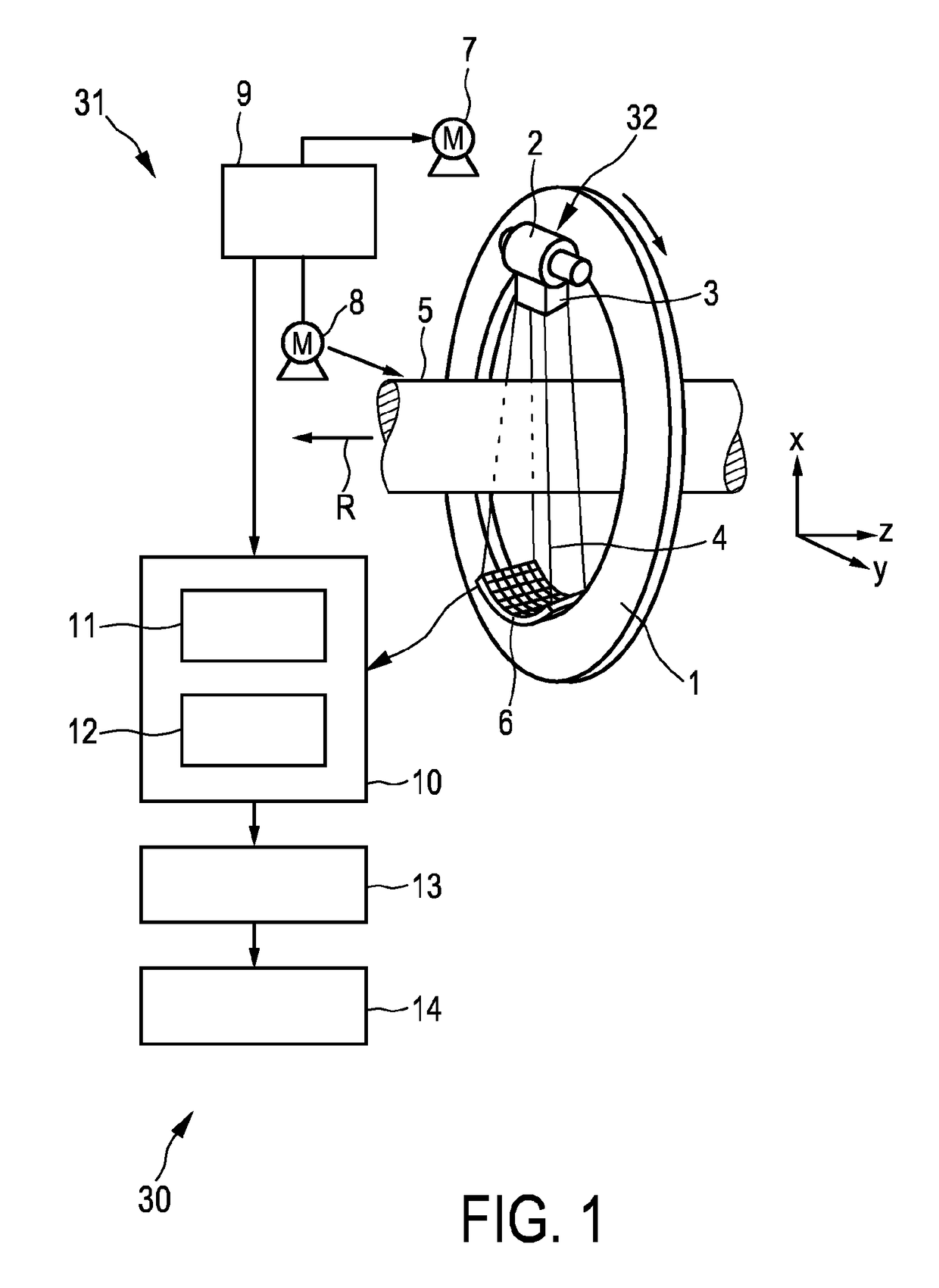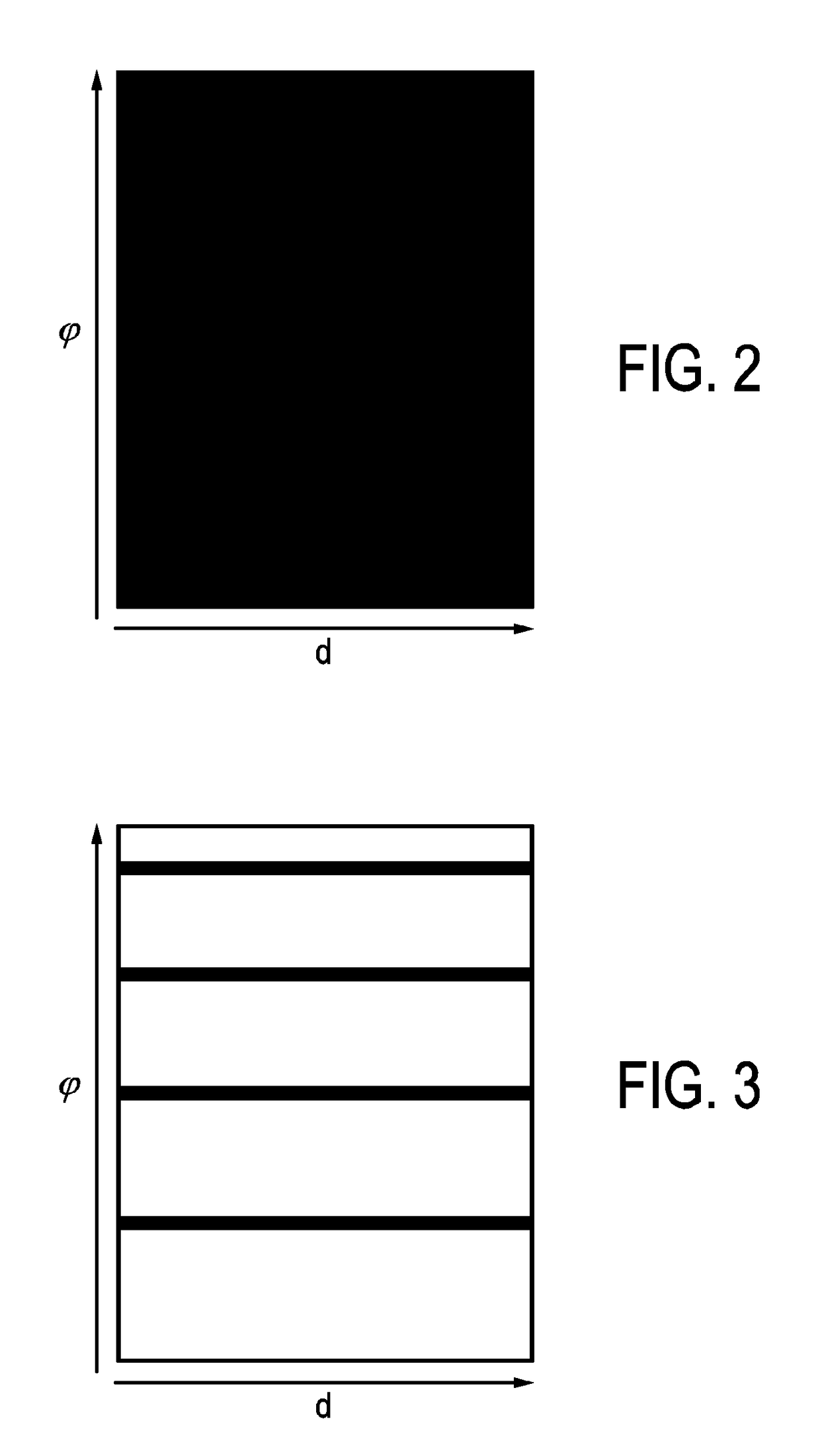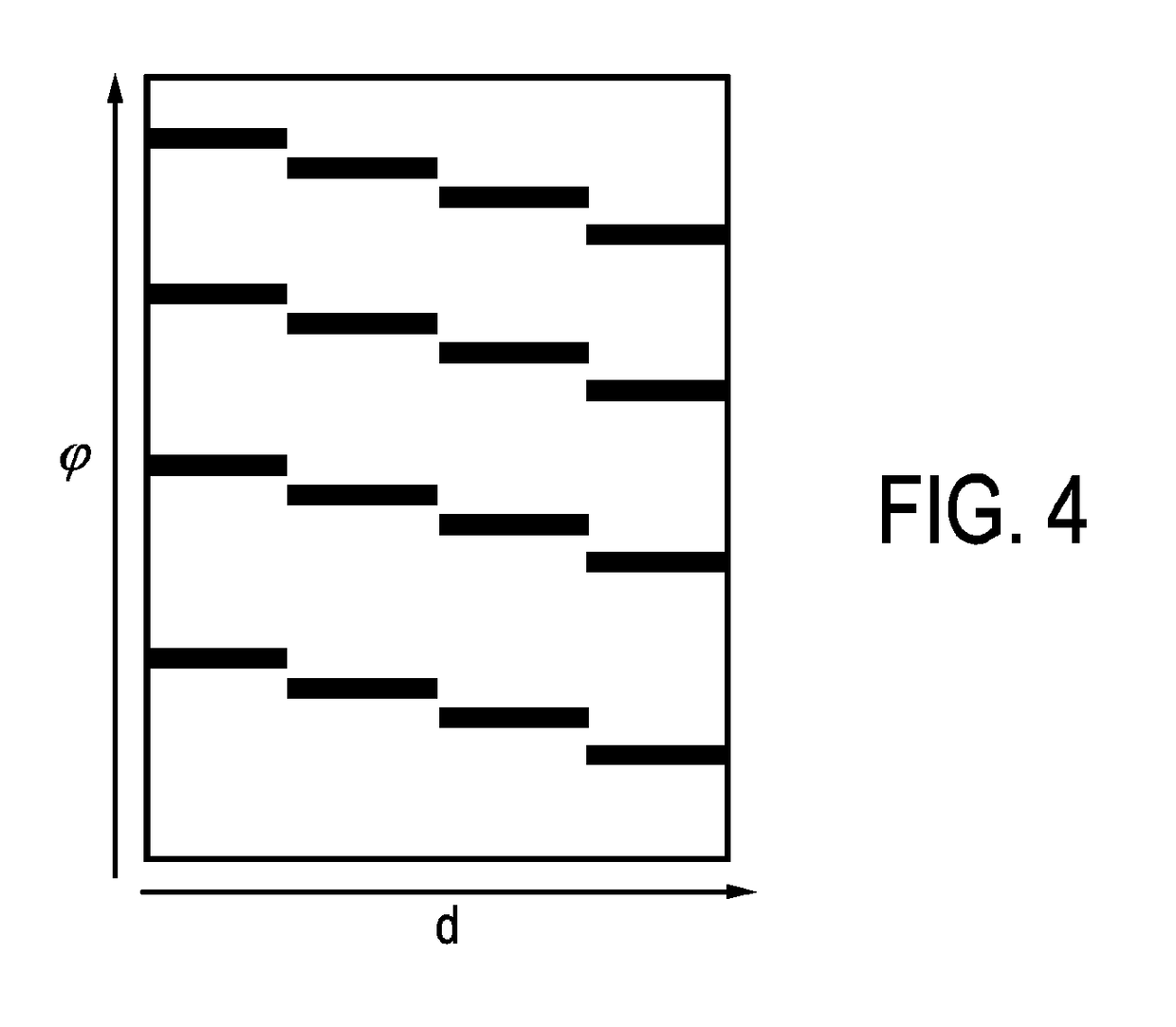Projection data acquisition apparatus
a technology of projection data and acquisition apparatus, which is applied in the field of projection data acquisition apparatus, method and computer program, and can solve problems such as increasing nois
- Summary
- Abstract
- Description
- Claims
- Application Information
AI Technical Summary
Benefits of technology
Problems solved by technology
Method used
Image
Examples
Embodiment Construction
[0040]FIG. 1 shows schematically and exemplarily an embodiment of a computed tomography system for generating a computed tomography image of an object. The computed tomography system 30 includes a gantry 1 which is capable of rotation about a rotational axis R which extends parallel to a z axis. A radiation device 32 is mounted on the gantry 1. The radiation device 32 comprises a radiation source 2 for generating a pulsed radiation beam 4 and a collimator 3 for shaping the generated pulsed radiation beam 4. In particular, the collimator 3 is adapted to partially block the pulsed radiation beam 4 for shaping the pulsed radiation beam 4. The radiation source 2 is preferentially a grid switching x-ray source.
[0041]The radiation 4 traverses an object (not shown), such as a person, in an examination zone 5 being, in this embodiment, cylindrical. After having traversed the examination zone 5 and thus the object within the examination zone 5 the radiation beam 4 is incident on a detection ...
PUM
| Property | Measurement | Unit |
|---|---|---|
| thickness | aaaaa | aaaaa |
| diameter | aaaaa | aaaaa |
| rotation time | aaaaa | aaaaa |
Abstract
Description
Claims
Application Information
 Login to View More
Login to View More - R&D
- Intellectual Property
- Life Sciences
- Materials
- Tech Scout
- Unparalleled Data Quality
- Higher Quality Content
- 60% Fewer Hallucinations
Browse by: Latest US Patents, China's latest patents, Technical Efficacy Thesaurus, Application Domain, Technology Topic, Popular Technical Reports.
© 2025 PatSnap. All rights reserved.Legal|Privacy policy|Modern Slavery Act Transparency Statement|Sitemap|About US| Contact US: help@patsnap.com



